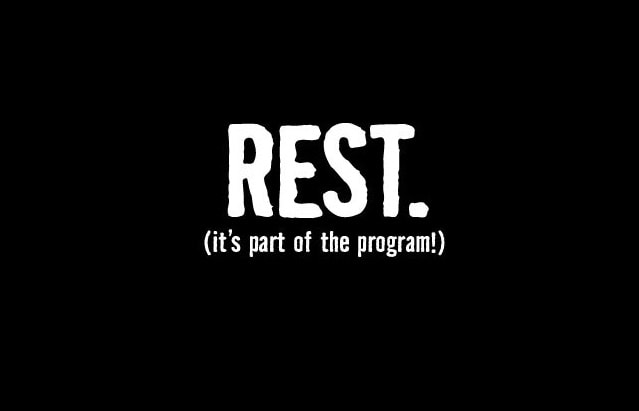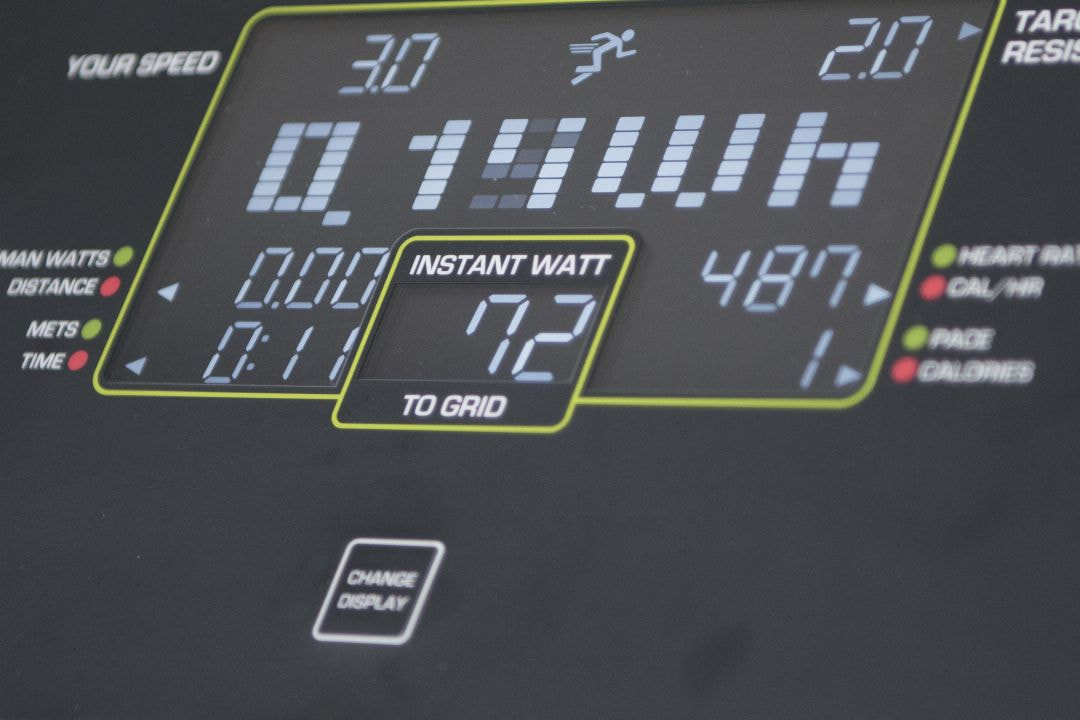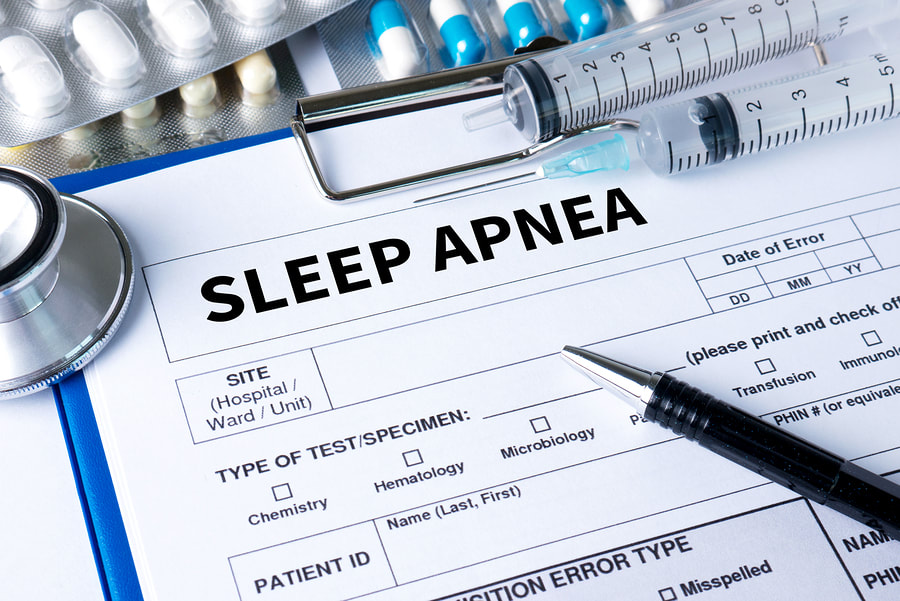|
As we enter a new year, it's important to understand the difference between resolutions, goals, and habits. While resolutions often fade away, goals and habits have the power to create lasting change in our lives. In this blog post, we'll explore the distinctions between resolutions, goals, and habits, and how they can work together to help us achieve personal growth and success.
Resolutions, Goals, and Habits Defined: To clarify the differences between resolutions, goals, and habits, let's define each term: 1. Resolutions: Resolutions are statements of what we want to change or improve. They are often made at the beginning of the year and reflect our desires for personal growth. However, resolutions tend to be vague and lack a clear plan of action. 2. Goals: Goals are specific, measurable, and time-bound statements of what we want to achieve. They provide a clear target and outline the steps needed to reach that target. Goals are actionable and require planning and commitment. 3. Habits: Habits are the behaviors and actions that we consistently practice. They are automatic and ingrained in our daily routines. Building positive habits is essential for long-term success, as they create a strong foundation for achieving our goals. The Power of Combining Goals and Habits: While resolutions often fall by the wayside, goals and habits work together to create lasting change. By setting clear goals and building supportive habits, we increase our chances of success. Goals provide direction and motivation, while habits ensure consistent action towards those goals. Tips for Setting Goals and Building Habits: To effectively combine goals and habits, consider the following tips: 1. Set Specific Goals: Clearly define what you want to achieve and establish specific, measurable targets. Break down your goals into smaller, manageable steps to make them more attainable. 2. Create an Action Plan: Outline the steps you need to take to reach your goals. Identify the habits that will support your goals and incorporate them into your daily routine. 3. Start Small with Habits: Begin by focusing on one or two habits that align with your goals. Start with small, achievable actions and gradually increase their intensity or frequency over time. 4. Track Your Progress: Keep a record of your progress to stay motivated and hold yourself accountable. Use habit trackers, journals, or apps to monitor your habits and celebrate your successes. 5. Adjust and Adapt: Be flexible and willing to adjust your goals and habits as needed. Life circumstances may change, and it's important to adapt your plans accordingly. 6. Find Support: Surround yourself with like-minded individuals who can support and encourage you along your journey. Join communities, seek out mentors, or find an accountability partner to share your goals and progress with. 7. Embrace Failure as a Learning Opportunity: It's natural to face setbacks along the way. Instead of viewing them as failures, see them as opportunities to learn and grow. Use setbacks as stepping stones towards success. Conclusion: As we embark on a new year, let's move beyond resolutions and embrace the power of goals and habits. Resolutions are statements of change, while goals provide direction and habits ensure consistent action. By setting clear goals, creating actionable plans, building supportive habits, finding support, and embracing failure as a learning opportunity, we can achieve lasting change and personal growth. Remember, it's the combination of goals and habits that propels us forward on our journey towards success. Here's to a year of meaningful goals, positive habits, and transformative growth!
0 Comments
In the pursuit of our fitness goals, we often focus on pushing ourselves to the limit, constantly striving for improvement. While dedication and hard work are essential, it's equally important to recognize the significance of rest and recovery in our training programs. Incorporating adequate rest periods can have a profound impact on our overall performance, well-being, and long-term success. In this blog post, we will explore the benefits of rest and recovery, backed by scientific research, and provide you with the encouragement to prioritize these essential elements in your training routine.
1. Physical Benefits of Rest and Recovery: Rest and recovery play a crucial role in allowing our bodies to repair and rebuild. During intense workouts, our muscles undergo micro-tears, and rest periods provide the necessary time for these muscles to heal and grow stronger. Research has shown that incorporating rest days into your training program can lead to increased muscle strength, reduced risk of injury, and improved overall performance (1). Additionally, rest allows our bodies to replenish energy stores, regulate hormone levels, and optimize immune function, ensuring we are ready to tackle our next workout with full vigor. 2. Mental and Emotional Benefits of Rest and Recovery: Physical fatigue is not the only consequence of intense training. Mental and emotional exhaustion can also hinder our progress and well-being. Rest and recovery provide an opportunity to recharge mentally, reducing stress levels and preventing burnout. Studies have shown that adequate rest can improve cognitive function, enhance focus and concentration, and promote better sleep patterns (2). By incorporating rest into your training program, you can maintain a healthy balance between physical exertion and mental rejuvenation, leading to improved overall performance and a more positive mindset. 3. Strategies for Incorporating Rest and Recovery: Now that we understand the importance of rest and recovery, let's explore some strategies to help you incorporate these vital elements into your training program: a. Schedule Regular Rest Days: Plan dedicated rest days into your training schedule to allow your body and mind to recover fully. This could involve complete rest or engaging in low-intensity activities such as yoga or stretching. b. Listen to Your Body: Pay attention to your body's signals and adjust your training intensity accordingly. If you're feeling excessively fatigued or experiencing persistent muscle soreness, it may be a sign that you need more rest. c. Prioritize Sleep: Quality sleep is essential for optimal recovery. Aim for 7-9 hours of uninterrupted sleep each night to support muscle repair, hormone regulation, and overall well-being. d. Incorporate Active Recovery: On rest days, consider engaging in light activities such as walking, swimming, or cycling. These low-impact exercises can promote blood flow, aid in muscle recovery, and enhance overall mobility. Conclusion: Incorporating rest and recovery into your training program is not a sign of weakness but rather a strategic approach to unlocking your full potential. By allowing your body and mind to rest and rejuvenate, you can optimize your performance, reduce the risk of injury, and maintain a positive mindset throughout your fitness journey. Remember, progress is not solely determined by the intensity of your workouts but also by the quality of your recovery. So, embrace the power of rest and recovery, and watch as your fitness goals become more attainable than ever before. References: 1. Schoenfeld, B. J., & Krieger, J. (2017). The impact of rest duration on hypertrophic adaptations in resistance-trained men. Journal of Strength and Conditioning Research, 31(4), 840-847. 2. Samuels, C. (2008). Sleep, recovery, and performance: The new frontier in high-performance athletics. Neurologic Clinics, 26(1), 169-180. Understanding the various metrics used in exercise can greatly enhance your training and help you achieve your fitness goals more effectively. In this blog post, we will delve into several commonly used exercise metrics, including watts, METs (Metabolic Equivalent of Task), calories, heart rate, distance, speed, repetitions and sets, time, and rate of perceived exertion (RPE). We will explore what each metric represents, how they can be measured, compare and contrast them, and provide recommendations on how to utilize these metrics to improve your training.
1. Watts: Watts (W) measure the rate at which work is done during exercise. It quantifies the amount of energy expended and is commonly used in activities such as cycling, rowing, and using certain cardio machines. Comparison: Watts provide a direct measurement of power output during exercise, making them highly accurate for tracking progress and setting specific training goals. However, they may require specialized equipment to measure and may not be as familiar to the average exerciser. 2. METs (Metabolic Equivalent of Task): METs measure the energy expenditure of various activities relative to the resting metabolic rate (RMR). They quantify the intensity of an activity by comparing it to the energy expended at rest, where 1 MET is equal to the energy expended while sitting quietly. Comparison: METs offer a practical way to estimate the intensity of various activities without the need for specialized equipment. They are commonly used in exercise guidelines and can help individuals choose activities that align with their fitness goals. However, METs may be less precise than watts and may not account for individual variations in fitness levels. 3. Calories: Calories represent the energy expended during physical activity. They are widely used in fitness trackers, exercise equipment, and weight management programs. Comparison: Calories provide a familiar and easily understandable measurement of energy expenditure. They are widely used in tracking daily activity and can help individuals monitor their energy balance. However, calorie counts can vary depending on factors such as body weight, metabolism, and exercise efficiency. 4. Heart Rate: Monitoring your heart rate during exercise can provide valuable information about your cardiovascular fitness and intensity level. It can help you determine if you are working within your target heart rate zone for optimal cardiovascular benefits. 5. Distance: Tracking the distance covered during activities such as running, cycling, or swimming can help you set distance-based goals and monitor your progress over time. It can also be useful for planning and tracking your training volume. 6. Speed: Measuring your speed can be particularly relevant for activities like running, cycling, or rowing. It can help you gauge your progress and set pace-based goals for specific workouts or races. 7. Repetitions and Sets: For strength training exercises, tracking the number of repetitions (reps) and sets can help you monitor your progress and ensure progressive overload. It can also help you plan and structure your workouts effectively. 8. Time: Keeping track of the duration of your workouts can help you ensure that you are meeting recommended guidelines for physical activity. It can also be useful for comparing the duration of different activities and planning your training schedule. 9. Rate of Perceived Exertion (RPE): RPE is a subjective measure of how hard you feel you are working during exercise. It can be a useful tool, especially when other metrics like heart rate or power output are not available. RPE can help you gauge your effort level and adjust your intensity accordingly. Utilizing Exercise Metrics for Training Improvement: To make the most of these exercise metrics, here are some recommendations for the average exerciser: 1. Set specific goals: Use watts, METs, heart rate, distance, speed, repetitions and sets, time, or RPE to set specific training goals based on your fitness level and desired intensity. Gradually increase the metrics to challenge yourself and improve your fitness. 2. Track progress: Utilize the metrics to track your progress over time. This can help you identify improvements, adjust your training, and stay motivated. 3. Mix it up: Use a variety of metrics to diversify your exercise routine. Aim for a mix of activities with varying intensities, distances, speeds, or training volumes to challenge different muscle groups and improve overall fitness. 4. Seek professional guidance: Consult with a fitness professional or trainer who can help you understand and interpret these metrics in the context of your specific goals and abilities. They can provide personalized recommendations and help you optimize your training. Conclusion: Understanding exercise metrics such as watts, METs, calories, heart rate, distance, speed, repetitions and sets, time, and RPE can provide valuable insights into your training and help you optimize your workouts. By setting goals, tracking progress, and seeking professional guidance, you can utilize these metrics to improve your training and achieve your fitness objectives more effectively. Remember, consistency and enjoyment are key to long-term success in any exercise regimen. As the days grow shorter and the nights longer, we find ourselves on the cusp of bidding farewell to daylight savings time. This biannual tradition, where we adjust our clocks forward or backward, has a profound impact on our daily lives. In this blog post, we will delve into the history of daylight savings, explore its effects on our sleep and circadian rhythm, and provide valuable tips on how to smoothly transition into this time change. In 2023, the clocks will be changed back on November 5th.
The History of Daylight Savings: Daylight savings time was first introduced during World War I as a means to conserve energy. By adjusting the clocks forward in the spring, we maximize daylight during the evening hours, reducing the need for artificial lighting. However, the practice has evolved over time, with different countries adopting varying start and end dates. Effects on Sleep and Circadian Rhythm: The end of daylight savings time can disrupt our sleep patterns and circadian rhythm. Suddenly, we find ourselves waking up in darkness and experiencing earlier sunsets. This shift in natural light exposure can confuse our internal body clock, leading to difficulties falling asleep and waking up. The abrupt change can leave us feeling groggy, fatigued, and even affect our mood and productivity. Tips for Adjusting to the Change: 1. Gradual Transition: In the days leading up to November 5th, gradually adjust your sleep schedule by going to bed and waking up 15 minutes earlier each day. This will help your body adapt to the new time gradually. 2. Optimize Your Sleep Environment: Create a sleep-friendly environment by ensuring your bedroom is cool, dark, and quiet. Consider using blackout curtains to block out any excess light that may disrupt your sleep. 3. Establish a Bedtime Routine: Engage in relaxing activities before bed, such as reading a book or taking a warm bath. Establishing a consistent bedtime routine signals to your body that it's time to wind down and prepare for sleep. 4. Limit Exposure to Blue Light: Avoid electronic devices, such as smartphones and tablets, before bed. The blue light emitted by these devices can suppress the production of melatonin, a hormone that regulates sleep. 5. Embrace Natural Light: Expose yourself to natural light during the day, especially in the morning. This helps regulate your circadian rhythm and promotes alertness during the day while aiding in better sleep at night. Conclusion: As we approach November 5th, the end of daylight savings time, it's essential to acknowledge the impact it has on our sleep and overall well-being. By understanding the history behind this tradition and implementing practical tips for adjusting to the time change, we can navigate this transition with ease. Embrace the opportunity to prioritize your sleep and health, and let the end of daylight savings be a catalyst for positive change in your daily routine. Breathwork for Anxiety: Unlocking the Power of Proper Breathing for Stress Relief and Mental Health11/1/2023 In our fast-paced and demanding world, anxiety has become a prevalent issue affecting millions of individuals. While there are various approaches to managing anxiety, one powerful tool that often goes unnoticed is our breath. Breathing is not only essential for sustaining life but also plays a crucial role in regulating our stress response and promoting overall mental well-being. In this blog post, we will explore the importance of breathing for stress and mental health, discuss proper breathing techniques, and delve into the mind-body connection. So, let's take a deep breath and embark on this journey towards calmness and wellness.
The Link Between Breathing and Anxiety: Breathing is intimately connected to our nervous system, particularly the autonomic nervous system (ANS), which controls our involuntary bodily functions. When we experience anxiety, our sympathetic nervous system (SNS) is activated, triggering the "fight or flight" response. This response leads to rapid, shallow breathing, primarily through the mouth and upper chest. Unfortunately, this type of breathing exacerbates anxiety symptoms and perpetuates the stress cycle. The Power of Proper Breathing Techniques: To counteract anxiety and promote relaxation, it is crucial to adopt proper breathing techniques. Two effective techniques are nasal breathing and diaphragmatic breathing. 1. Nasal Breathing: Nasal breathing involves inhaling and exhaling through the nose. This technique has numerous benefits, including filtering and humidifying the air, promoting optimal oxygen-carbon dioxide exchange, and activating the parasympathetic nervous system (PNS), responsible for the "rest and digest" response. Nasal breathing helps calm the mind, reduce anxiety, and enhance overall well-being. 2. Diaphragmatic Breathing: Diaphragmatic breathing, also known as belly breathing, involves engaging the diaphragm, a dome-shaped muscle located beneath the lungs. This technique allows for deep, slow breaths that fully engage the diaphragm, promoting relaxation and activating the PNS. Diaphragmatic breathing helps regulate heart rate, blood pressure, and cortisol levels, reducing anxiety and stress. The Mind-Body Connection: Proper breathing techniques not only impact our mental health but also influence other bodily systems. When we breathe deeply and rhythmically, we enhance oxygenation, improve circulation, and support the lymphatic system, which aids in detoxification. Additionally, functional breathing positively affects digestion, sleep quality, immune function, and cognitive performance. By nurturing our breath, we create a harmonious connection between mind and body, fostering overall wellness. Breathing Exercises for Anxiety Relief: 1. Box Breathing: Inhale slowly for a count of four, hold the breath for a count of four, exhale slowly for a count of four, and hold the breath out for a count of four. Repeat this cycle several times. 2. 4-7-8 Breathing: Inhale through the nose for a count of four, hold the breath for a count of seven, exhale through the mouth for a count of eight. Repeat this cycle several times. 3. Resonance Breathing: Find a comfortable breathing rhythm and focus on extending the exhale. Aim for a longer exhale than inhale, such as inhaling for a count of three and exhaling for a count of six. This technique helps activate the body's relaxation response and promotes a sense of calm. 4. Buteyko Breathing: The Buteyko Method is a breathing technique developed by Dr. Konstantin Buteyko. It focuses on reducing over-breathing and increasing carbon dioxide levels in the body, which can help alleviate anxiety and improve overall health. Here's a simple exercise to get started: - Sit comfortably with a straight back and close your eyes. - Gently close your mouth and breathe in and out through your nose. - Take a small, gentle breath in, and then exhale slowly and completely. - After exhaling, hold your breath for a comfortable duration (start with a few seconds and gradually increase over time). - When you feel the urge to breathe again, take a gentle breath in and repeat the cycle. - Practice this exercise for a few minutes each day, gradually increasing the duration of breath holds as you become more comfortable. Remember, consistency is key when practicing these breathing exercises. Incorporate them into your daily routine, especially during moments of stress or anxiety, to experience their full benefits. Conclusion: Breathwork is a powerful tool for managing anxiety and promoting overall mental well-being. By adopting proper breathing techniques such as nasal breathing, diaphragmatic breathing, resonance breathing, and exploring methods like the Buteyko Method, we can activate the relaxation response, reduce stress, and enhance our overall health. Remember, the breath is always with us, ready to guide us towards calmness and wellness. So, take a moment, breathe deeply, and embrace the transformative power of your breath. Sources: 1. Harvard Health Publishing. (2019). Relaxation techniques: Breath control helps quell errant stress response.Retrieved from https://www.health.harvard.edu/mind-and-mood/relaxation-techniques-breath-control-helps-quell-errant-stress-response 2. Jerath, R., Edry, J. W., Barnes, V. A., & Jerath, V. (2006). Physiology of long pranayamic breathing: Neural respiratory elements may provide a mechanism that explains how slow deep breathing shifts the autonomic nervous system. Medical Hypotheses, 67(3), 566-571. 3. Ma, X., Yue, Z. Q., Gong, Z. Q., Zhang, H., Duan, N. Y., Shi, Y. T., ... & Li, Y. F. (2017). The effect of diaphragmatic breathing on attention, negative affect, and stress in healthy adults. Frontiers in Psychology, 8, 874. 4. Buteyko, K. P. (1991). Buteyko breathing manual: The official guide to the Buteyko method. Buteyko Clinic International. In our fast-paced lives, it's easy to overlook the importance of gratitude. However, cultivating gratitude can have profound effects on our overall health, well-being, and even our sleep quality. In this blog post, we will explore the remarkable benefits of gratitude, from its impact on our mental and physical health to its influence on our relationships, stress levels, and sleep patterns. Discover how embracing gratitude can transform your life and contribute to a more restful and rejuvenating sleep experience.
Gratitude and Mental Health: Practicing gratitude can enhance our mental resilience, helping us cope with stress, trauma, and adversity more effectively. It has also been linked to lower levels of depression and anxiety, shifting our mindset towards the positive aspects of life and improving our overall mental well-being. Gratitude and Physical Health: Expressing gratitude can have a positive impact on our physical health as well. It has been shown to boost our immune system, reduce inflammation, and lower the risk of heart disease. Grateful individuals often exhibit healthier behaviors, leading to increased longevity and overall well-being. Gratitude and Relationships: Gratitude strengthens our connections with others by fostering a sense of closeness and appreciation. It also increases empathy and compassion, creating more fulfilling and harmonious relationships. Gratitude and Stress Management: Practicing gratitude reduces stress levels and promotes relaxation. By shifting our attention away from stressors and focusing on the positive aspects of life, we can cultivate a more peaceful state of mind. Gratitude and Sleep Quality: Gratitude has a direct impact on our sleep patterns and overall sleep quality. By reducing stress and anxiety, expressing gratitude before bed helps relax the mind and prepare for sleep. Grateful individuals tend to experience longer sleep durations and report higher levels of sleep satisfaction. Practical Tips for Cultivating Gratitude: 1. Keep a Gratitude Journal: Write down three things you are grateful for each day, focusing on the small joys and blessings in your life. 2. Bedtime Gratitude Meditation: Practice a short gratitude meditation before sleep. Close your eyes, take deep breaths, and focus on the things you are grateful for. Visualize these blessings and let the feelings of gratitude wash over you, creating a sense of peace and tranquility. 3. Express Gratitude to Loved Ones: Take a moment to express your gratitude to your loved ones before bed. Share a heartfelt thank you or appreciation for something they did or simply for their presence in your life. This act of gratitude can deepen your connections and promote a sense of peace before sleep. Conclusion: Cultivating gratitude is a powerful tool that positively impacts our mental, physical, and emotional well-being. By embracing gratitude, we can enhance our mental resilience, improve our relationships, manage stress more effectively, and even experience better sleep quality. Incorporate gratitude practices into your daily routine, such as journaling, meditation, and expressing appreciation to loved ones. Embrace the power of gratitude and witness the transformative effects it has on your health, relationships, and sleep. Let gratitude guide you towards a more fulfilling and restful life. Have you ever wondered why you wake up feeling tired despite getting a full night's sleep? Or perhaps you struggle with excessive daytime sleepiness or loud snoring? If so, your doctor may recommend a sleep study to evaluate your sleep patterns and identify any underlying sleep disorders. In this blog post, we will explore the benefits of home sleep testing, including its convenience and affordability, as a solution for diagnosing sleep apnea.
Understanding the Importance of Sleep Studies: Sleep studies, also known as polysomnography, are diagnostic tests conducted in a sleep laboratory or sometimes in the comfort of your own home. These studies monitor various physiological parameters during sleep, such as brain activity, eye movements, heart rate, breathing patterns, and oxygen levels. By analyzing this data, sleep specialists can diagnose sleep disorders and develop appropriate treatment plans tailored to your specific needs. The Process of a Sleep Study: 1. Consultation: Before the sleep study, you will have a consultation with a sleep specialist who will discuss your symptoms, medical history, and any concerns you may have. This is an opportunity to ask questions and gain a better understanding of the procedure. 2. In-Lab Sleep Study: If you are scheduled for an in-lab sleep study, you will be asked to arrive at the sleep center in the evening. You will be provided with a private room resembling a comfortable hotel room. The sleep technologist will attach sensors to your body to monitor your sleep patterns throughout the night. 3. Home Sleep Test: Alternatively, your doctor may recommend a home sleep test. This involves using a portable device that you can set up and wear at home. The device will monitor your breathing, oxygen levels, and other relevant parameters while you sleep. Home sleep tests are often used to diagnose sleep apnea, a common sleep disorder. Benefits of Home Sleep Testing: 1. Convenience: Our business specializes in offering convenient home sleep testing options. With our FDA and AASM-approved kits, you can conduct the study in the comfort of your own home. This allows for a more relaxed and natural sleep environment, potentially leading to more accurate results. 2. Affordability: Home sleep testing is a cost-effective option compared to in-lab sleep studies. Our services are designed to be affordable and accessible, ensuring that individuals can receive a proper diagnosis without breaking the bank. 3. FDA and AASM Approval: Our home sleep testing options are approved by the FDA and the American Academy of Sleep Medicine (AASM). This ensures that our tests meet the highest standards of quality and accuracy, providing reliable results for sleep apnea diagnosis. 4. Privacy and Comfort: Conducting a sleep study at home allows for increased privacy and comfort. You can avoid the unfamiliar environment of a sleep lab, which can sometimes lead to anxiety or difficulty sleeping. By being in a familiar setting, you can relax and sleep more naturally, leading to more accurate results. Conclusion: If your doctor has recommended a sleep study, it is an important step towards understanding and addressing any sleep disorders that may be affecting your health and quality of life. By considering the convenience and affordability of home sleep testing, you can receive an accurate diagnosis for sleep apnea without the need for an in-lab study. Embrace the opportunity to prioritize your sleep and take control of your well-being. Remember, a good night's sleep is the foundation for a healthier and happier life. Explore our home sleep testing options today and start your journey towards better sleep and improved health. In today's fast-paced world, many of us find ourselves sitting for extended periods, whether it's at work, during our commute, or while relaxing at home. Unfortunately, research has shown that excessive sitting can have detrimental effects on our health. However, a recent study has revealed that just 22 minutes of walking can help counteract the risks associated with prolonged sitting. Let's delve into the details and discover how this simple activity can make a significant difference in our overall well-being.
The Study: A study published in the American Journal of Preventive Medicine examined the impact of walking on the health risks associated with sitting. The researchers analyzed data from over 90,000 participants, focusing on their sitting time and physical activity levels. The results were eye-opening. The Findings: The study found that individuals who sat for long periods but engaged in at least 22 minutes of moderate-intensity walking each day had a significantly lower risk of developing chronic diseases such as heart disease, diabetes, and certain types of cancer. Even those who didn't meet the recommended guidelines for physical activity still experienced some benefits from incorporating walking into their routine. Why Walking Works: Walking is a low-impact exercise that can be easily incorporated into our daily lives. It doesn't require any special equipment or a gym membership, making it accessible to almost everyone. The act of walking engages various muscle groups, increases heart rate, and improves circulation, all of which contribute to better overall health. Benefits of Walking: 1. Improved cardiovascular health: Walking helps strengthen the heart and lowers the risk of heart disease and stroke. 2. Weight management: Regular walking can aid in weight loss or maintenance by burning calories and boosting metabolism. 3. Enhanced mental well-being: Walking releases endorphins, which can improve mood and reduce stress and anxiety. 4. Increased energy levels: Engaging in physical activity like walking can boost energy levels and combat fatigue. 5. Better joint health: Walking is a low-impact exercise that can help improve joint flexibility and reduce the risk of arthritis. Incorporating Walking into Your Routine: Now that we understand the benefits of walking, let's explore some practical ways to incorporate it into our daily routine: 1. Take short walking breaks: Instead of sitting for long periods, take short breaks to walk around your office or home. 2. Walk during phone calls: If you have a phone call that doesn't require your immediate attention, take it while walking. 3. Use stairs instead of elevators: Opt for the stairs whenever possible to get some extra steps in. 4. Walk to nearby destinations: If your destination is within walking distance, leave the car behind and enjoy a brisk walk instead. 5. Join a walking group: Walking with others can provide motivation and make the activity more enjoyable. Conclusion: The findings of this study highlight the importance of incorporating physical activity, particularly walking, into our daily routine. Just 22 minutes of walking can significantly offset the risks associated with prolonged sitting, leading to improved overall health and well-being. So, let's lace up our shoes, step outside, and embrace the power of walking for a healthier and happier life. We all aspire to live long, healthy lives, free from the burden of chronic diseases. But did you know that certain lifestyle choices can significantly impact our life expectancy? A groundbreaking study conducted among 719,147 U.S. veterans sheds light on the power of modifiable lifestyle factors in increasing longevity. Let's dive into the fascinating findings and discover how we can enhance our own well-being.
The Study: Chronic diseases account for a staggering 80% of healthcare costs and are the leading cause of illness and death in the United States. To address this issue, researchers explored the concept of lifestyle medicine, which focuses on tackling the root causes of chronic diseases. The study, led by Xuan-Mai T. Nguyen from the Carle Illinois College of Medicine, aimed to determine the impact of specific lifestyle factors on mortality risk and longevity among U.S. veterans. The Lifestyle Factors: The study identified eight key lifestyle factors associated with increased life expectancy: 1. Never Smoking: Unsurprisingly, non-smokers had a 71% lower risk of premature mortality compared to smokers. 2. Regular Physical Activity: Engaging in physical activity was linked to a 46% reduction in mortality risk. So, get moving and reap the benefits! 3. Avoiding Binge Drinking: Those who abstained from binge drinking had an impressive 81% lower risk of premature death. 4. Good Sleep Hygiene: Prioritizing quality sleep was associated with a remarkable 82% decrease in mortality risk. 5. Healthy Diet: Following a nutritious diet led to a 79% lower risk of premature mortality. Remember, you are what you eat! 6. Managing Stress: Minimizing stress levels resulted in a 78% reduction in mortality risk. Find healthy ways to cope with stress, such as meditation or hobbies. 7. Positive Social Relationships: Cultivating strong social connections was linked to a 95% lower risk of premature death. Surround yourself with supportive friends and loved ones. 8. No Opioid Addiction: Veterans without opioid use disorder had a 62% lower risk of mortality compared to those struggling with addiction. The Impact: The study found that each adopted lifestyle factor contributed to a lower risk of premature death. However, the real magic happened when all eight factors were combined. Veterans who embraced all eight factors experienced a remarkable 13% reduction in all-cause mortality. Furthermore, the study estimated that men and women who adopted all eight therapeutic lifestyle factors at the age of 40 could potentially gain an additional 23.7 and 22.6 years of life expectancy, respectively, compared to those who did not adopt any. Conclusion: The findings of this study, led by Xuan-Mai T. Nguyen, highlight the immense power of lifestyle choices in shaping our health and longevity. By making simple yet impactful changes to our daily routines, we can significantly reduce the risk of chronic diseases and increase our life expectancy. So, let's take charge of our well-being. Quit smoking, prioritize physical activity, moderate alcohol consumption, get enough quality sleep, nourish our bodies with a healthy diet, manage stress effectively, foster positive relationships, and avoid opioid addiction. By embracing these lifestyle factors, we can unlock the secrets to a longer, healthier life. Remember, it's never too late to start making positive changes. Let's embark on this journey together and pave the way for a brighter, healthier future. (Note: The study was conducted by Xuan-Mai T. Nguyen from the Carle Illinois College of Medicine and funded by the VA Office of Research and Development.) The Crucial Role of Sleep in Our Health Journey: Unveiling the Science Behind Optimal Well-being10/21/2023 In our fast-paced modern society, sleep is often overlooked or sacrificed in favor of work, social commitments, or other activities. However, understanding the importance of sleep and its impact on our health journey is paramount. In this blog post, we will delve into the stages of sleep, the influence of hormones, the risks of untreated sleep disorders, and how sleep affects weight loss, exercise, and recovery. Additionally, we will provide practical tips to optimize the quality of your sleep for an enhanced health journey. At Elevation Health Solutions, we specialize in sleep testing and lifestyle interventions, offering sleep apnea diagnosis and health coaching to improve sleep quality.
Stages of Sleep: Sleep is a complex process that consists of two main stages: rapid eye movement (REM) sleep and non-rapid eye movement (NREM) sleep. NREM sleep is further divided into three stages: N1, N2, and N3. Each stage plays a crucial role in various physiological and cognitive functions. During REM sleep, our brain is highly active, and this stage is associated with dreaming. REM sleep is essential for memory consolidation, learning, and emotional regulation. On the other hand, NREM sleep is responsible for physical restoration, growth, and repair. The N3 stage, also known as deep sleep, is particularly important for tissue repair, immune function, and hormone regulation. Hormones and Sleep: Sleep plays a vital role in regulating hormone levels, including those involved in appetite control, metabolism, and stress response. Two key hormones affected by sleep are leptin and ghrelin. Leptin, known as the "satiety hormone," signals to our brain that we are full and should stop eating. Lack of sleep can lead to decreased leptin levels, resulting in increased hunger and potential overeating. Conversely, ghrelin, the "hunger hormone," increases with sleep deprivation, leading to heightened appetite and cravings, particularly for high-calorie foods. Untreated Sleep Disorders and Weight: Sleep disorders such as insomnia and sleep apnea can significantly impact weight management. Insomnia, characterized by difficulty falling or staying asleep, can disrupt the delicate balance of hormones involved in appetite regulation, leading to weight gain or difficulty losing weight. Sleep apnea, a condition where breathing repeatedly stops and starts during sleep, can also contribute to weight gain. Sleep apnea disrupts sleep patterns, leading to fatigue and decreased physical activity. Moreover, it affects hormone regulation, increasing the risk of insulin resistance and metabolic dysfunction. Sleep and Weight Loss: Adequate sleep is crucial for successful weight loss. Sleep deprivation can hinder weight loss efforts by affecting metabolism, increasing cravings, and reducing motivation for physical activity. Additionally, lack of sleep can lead to muscle loss instead of fat loss, as the body tries to conserve energy. Exercise and Recovery: Sleep plays a vital role in exercise performance and recovery. During sleep, the body repairs and rebuilds tissues, replenishes energy stores, and strengthens the immune system. Insufficient sleep can impair exercise performance, decrease endurance, and prolong recovery time. Tips for Optimizing Sleep Quality: 1. Establish a consistent sleep schedule, aiming for 7-9 hours of sleep per night. 2. Create a sleep-friendly environment: a cool, dark, and quiet room. 3. Limit exposure to electronic devices before bed, as the blue light emitted can disrupt sleep. 4. Practice relaxation techniques such as meditation or deep breathing before sleep. 5. Avoid caffeine, nicotine, and alcohol close to bedtime, as they can interfere with sleep quality. At Elevation Health Solutions, we specialize in sleep testing and lifestyle interventions. Our expertise allows us to diagnose sleep apnea and provide effective health coaching to improve sleep quality. With our comprehensive approach, we aim to optimize your sleep and support your overall health journey. Conclusion: Sleep is a fundamental pillar of our health journey, influencing various aspects of our well-being. Understanding the stages of sleep, the impact of hormones, and the risks associated with untreated sleep disorders is crucial for optimizing weight management, exercise performance, and recovery. By prioritizing good quality sleep and implementing the provided tips, you can enhance your health journey and achieve optimal well-being. At Elevation Health Solutions, we specialize in sleep testing and lifestyle interventions, offering sleep apnea diagnosis and health coaching to improve sleep quality. Remember, a good night's sleep is not a luxury but a necessity for a healthier and happier life. References: 1. Spiegel K, et al. (2004). Impact of sleep debt on metabolic and endocrine function. The Lancet, 354(9188), 1435-1439. 2. Taheri S, et al. (2004). Short sleep duration is associated with reduced leptin, elevated ghrelin, and increased body mass index. PLoS Medicine, 1(3), e62. 3. St-Onge MP, et al. (2016). Sleep duration and quality: Impact on lifestyle behaviors and cardiometabolic health: A scientific statement from the American Heart Association. Circulation, 134(18), e367-e386. 4. Nedeltcheva AV, et al. (2010). Insufficient sleep undermines dietary efforts to reduce adiposity. Annals of Internal Medicine, 153(7), 435-441. 5. Fullagar HH, et al. (2015). Sleep and athletic performance: The effects of sleep loss on exercise performance, and physiological and cognitive responses to exercise. Sports Medicine, 45(2), 161-186. |
AuthorDamian Solorzano is Health and Wellness Influencer, Respiratory Specialist and Health Coach who is passionate about optimizing personal health. Categories
All
Archives
March 2024
|










 RSS Feed
RSS Feed